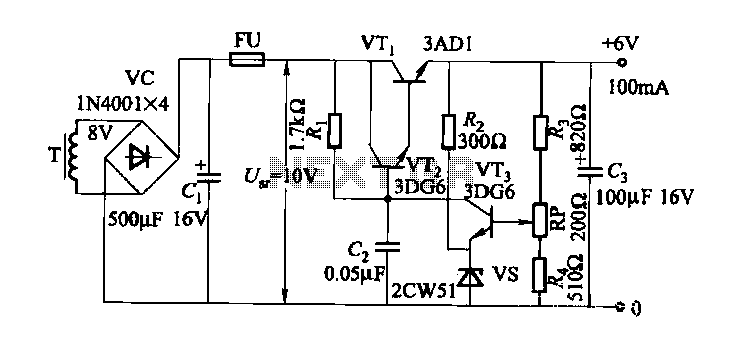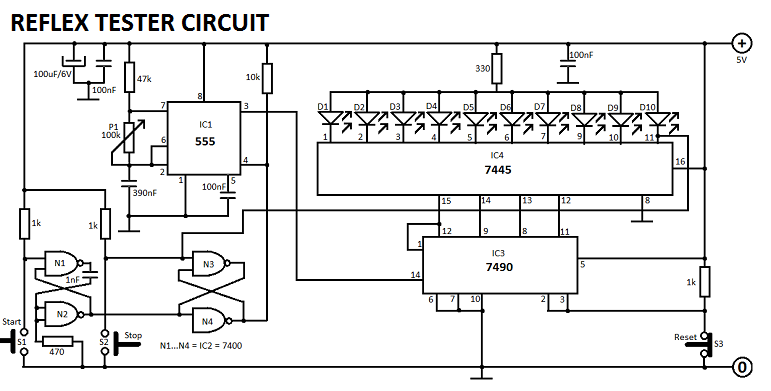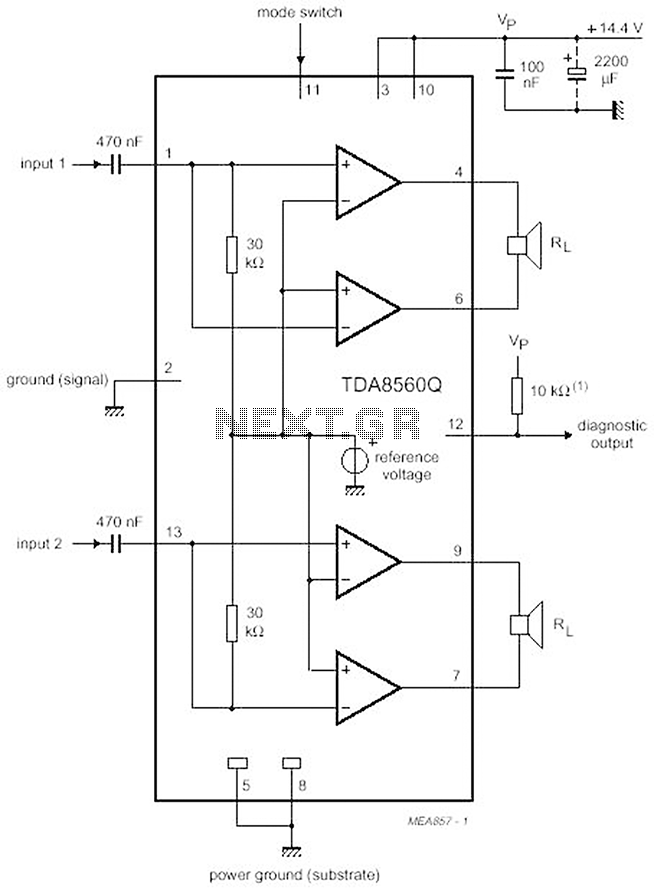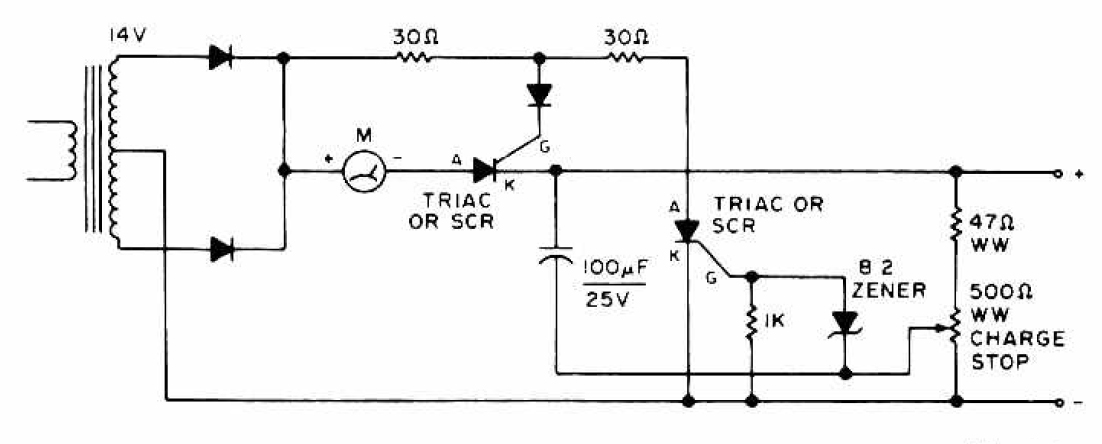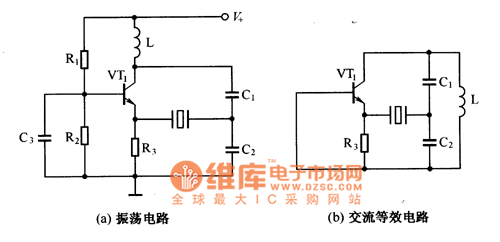
MAX7316 white LED driver circuit diagram
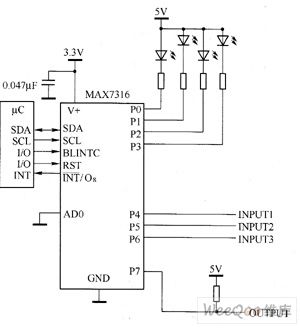
The main technical characteristics of the MAX7316 include a 400 kbps, 2-wire serial interface with a voltage tolerance of 5.5V. The operating voltage ranges from 2V to 3.6V. It features 8-bit PWM control for white LED brightness, with global brightness control for 16 LEDs and an additional 16 independent brightness controls. The device supports two-phase flashing for white LEDs and includes 5.5V input voltage protection. The RST input function clears the device.
The MAX7316 is a versatile LED driver integrated circuit designed for efficient control of multiple white LEDs. Its 2-wire serial interface allows for easy communication with microcontrollers, enabling fast data transmission at speeds up to 400 kbps. This feature is particularly beneficial for applications requiring rapid updates to LED states or brightness levels.
The device operates within a voltage range of 2V to 3.6V, making it suitable for battery-operated devices where power efficiency is critical. The 8-bit PWM (Pulse Width Modulation) control mechanism provides fine granularity in adjusting the brightness of individual LEDs, allowing for smooth transitions and a wide range of brightness levels. This capability is further enhanced by the global brightness control feature, which enables simultaneous adjustment of up to 16 LEDs, while still allowing for independent control of an additional 16 LEDs. This dual control scheme is advantageous in applications where different lighting effects or intensities are required.
The MAX7316 also supports two-phase flashing, which can be utilized to create dynamic lighting effects or visual signals. This feature can be particularly useful in decorative lighting, automotive applications, or any scenario where attention-grabbing illumination is desired.
Additionally, the device incorporates input voltage protection up to 5.5V, safeguarding it against potential over-voltage conditions that could damage the circuit. The RST input pin serves a critical function by allowing users to reset the device, ensuring that it can return to a known state when necessary.
In summary, the MAX7316 is an advanced LED driver IC that combines multiple features for effective LED control, making it an excellent choice for various lighting applications in consumer electronics, automotive lighting, and more. Its robust design and flexible control options provide engineers with the tools needed to implement sophisticated lighting solutions efficiently.MAX7316`s main technical characteristics are as follow. ? 400kbps, 2-wire Serial Interface, 5.5V voltage tolerance. ? working voltage is 2 ~ 3.6V. ? 8-bit PWM White LED brightness control, global brightness control 16 with additional 16 independent brightness control. ? two-phase flashing white LED. ? it has 5.5V input voltage protection. RST input clears th.. 🔗 External reference
The MAX7316 is a versatile LED driver integrated circuit designed for efficient control of multiple white LEDs. Its 2-wire serial interface allows for easy communication with microcontrollers, enabling fast data transmission at speeds up to 400 kbps. This feature is particularly beneficial for applications requiring rapid updates to LED states or brightness levels.
The device operates within a voltage range of 2V to 3.6V, making it suitable for battery-operated devices where power efficiency is critical. The 8-bit PWM (Pulse Width Modulation) control mechanism provides fine granularity in adjusting the brightness of individual LEDs, allowing for smooth transitions and a wide range of brightness levels. This capability is further enhanced by the global brightness control feature, which enables simultaneous adjustment of up to 16 LEDs, while still allowing for independent control of an additional 16 LEDs. This dual control scheme is advantageous in applications where different lighting effects or intensities are required.
The MAX7316 also supports two-phase flashing, which can be utilized to create dynamic lighting effects or visual signals. This feature can be particularly useful in decorative lighting, automotive applications, or any scenario where attention-grabbing illumination is desired.
Additionally, the device incorporates input voltage protection up to 5.5V, safeguarding it against potential over-voltage conditions that could damage the circuit. The RST input pin serves a critical function by allowing users to reset the device, ensuring that it can return to a known state when necessary.
In summary, the MAX7316 is an advanced LED driver IC that combines multiple features for effective LED control, making it an excellent choice for various lighting applications in consumer electronics, automotive lighting, and more. Its robust design and flexible control options provide engineers with the tools needed to implement sophisticated lighting solutions efficiently.MAX7316`s main technical characteristics are as follow. ? 400kbps, 2-wire Serial Interface, 5.5V voltage tolerance. ? working voltage is 2 ~ 3.6V. ? 8-bit PWM White LED brightness control, global brightness control 16 with additional 16 independent brightness control. ? two-phase flashing white LED. ? it has 5.5V input voltage protection. RST input clears th.. 🔗 External reference
